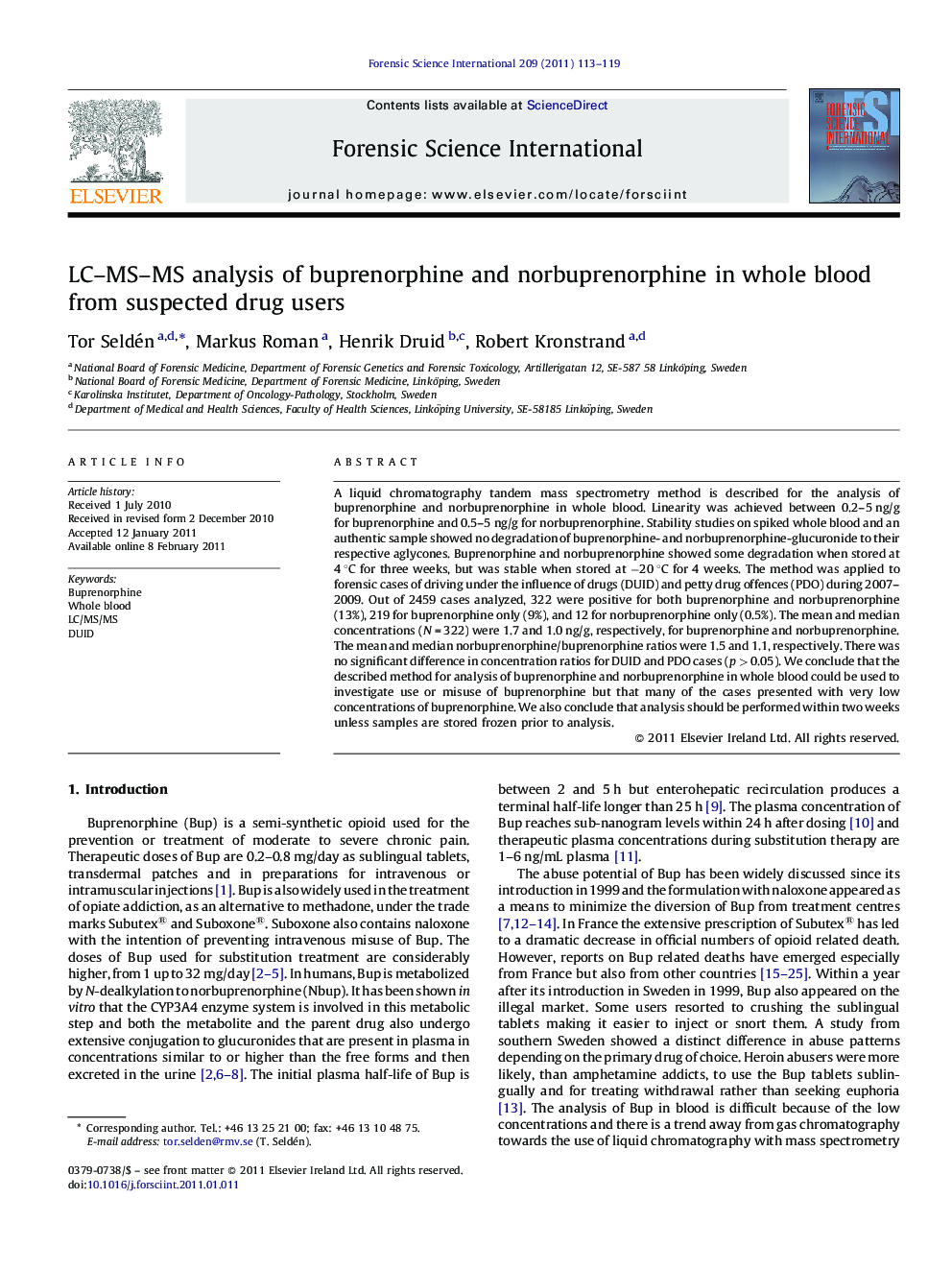| Article ID | Journal | Published Year | Pages | File Type |
|---|---|---|---|---|
| 96789 | Forensic Science International | 2011 | 7 Pages |
A liquid chromatography tandem mass spectrometry method is described for the analysis of buprenorphine and norbuprenorphine in whole blood. Linearity was achieved between 0.2–5 ng/g for buprenorphine and 0.5–5 ng/g for norbuprenorphine. Stability studies on spiked whole blood and an authentic sample showed no degradation of buprenorphine- and norbuprenorphine-glucuronide to their respective aglycones. Buprenorphine and norbuprenorphine showed some degradation when stored at 4 °C for three weeks, but was stable when stored at −20 °C for 4 weeks. The method was applied to forensic cases of driving under the influence of drugs (DUID) and petty drug offences (PDO) during 2007–2009. Out of 2459 cases analyzed, 322 were positive for both buprenorphine and norbuprenorphine (13%), 219 for buprenorphine only (9%), and 12 for norbuprenorphine only (0.5%). The mean and median concentrations (N = 322) were 1.7 and 1.0 ng/g, respectively, for buprenorphine and norbuprenorphine. The mean and median norbuprenorphine/buprenorphine ratios were 1.5 and 1.1, respectively. There was no significant difference in concentration ratios for DUID and PDO cases (p > 0.05). We conclude that the described method for analysis of buprenorphine and norbuprenorphine in whole blood could be used to investigate use or misuse of buprenorphine but that many of the cases presented with very low concentrations of buprenorphine. We also conclude that analysis should be performed within two weeks unless samples are stored frozen prior to analysis.
